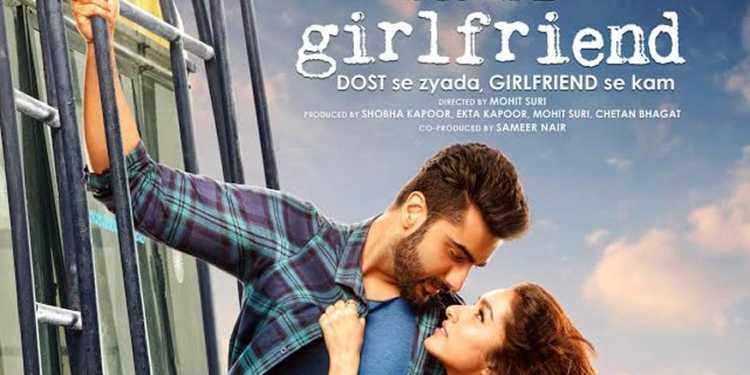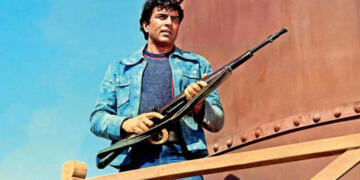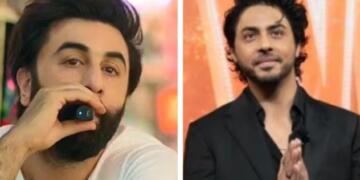I have read all of Chetan Bhagat’s books except One Indian Girl. Yes, that includes Half Girlfriend. Should one be proud of reading his books? Even though I graduated from an ICSE school, having read Shakespeare in the process, and several abridged novels that were incorporated in the syllabus, as well as many more that were not, I am actually proud of reading Chetan Bhagat. This one man, managed to make an entire generation of Indians from non literature backgrounds and professions, read. Not just that, he also created an entirely new market for books and authors in India, which lacked before his first book. And I’m proud of supporting him in his endeavor, knowing quite well that it is his business, and he is extraordinary at this business. That’s what inspires me the most about him.
However, one cannot ignore the fact that his writing is of substandard quality. This has been a topic of discussion for a decade now. People constantly bash his writing for having little depth, further less character motivations and backstory and far less interesting plot, but his books become massive bestsellers and is made into movies. At one point he said, “I have written in such a way that even a not well educated car driver can read and understand me.” He has been criticized at most online public portals, including Goodreads and Quora. He is constantly and unapologetically censured for being that one author, who started it all — an endless chain of short, distasteful, campus driven, love and sex containing novels with poor extremely writing quality. (That list is extremely long.) Still, his negative criticism did not change the way Bhagat kept writing his later books. He kept on doing what he does best. He wrote for his audience.
One of my friends once told me, “It’s better to be not well read, than to have read Chetan Bhagat’s books.” However, I begged to differ. Chetan Bhagat is the man who brought novels to people who would never read a novel. His books have acted as the entry points to English literature for many Indians, who after reading him, did not stop and went onto Stephen King, J. K. Rowling, Vikram Seth, Arundhati Roy, Ankita Desai, Salman Rushdie and many other authors. Who knows? Maybe one day they’ll pick up Tolkien or George R. R. Martin.
The endless plethora of 200 page-novels which are nothing more than Bollywood scripts, are actually much more widely read than the literary novels. And it was started by this man. Chetan Bhagat’s language is simplistic—you’ll never have to pick up a dictionary, or reread a sentence. The characters are relatable—engineering students, call center employees, aspiring businessmen. Book stores (not the stalls at railway platforms) have become more common even in smaller towns because people are buying books much more than they did before. However, they tend to buy a 150₹ book more often than a 1400 page book by Vikram Seth. CB paved the way for many up and coming authors.
Chetan Bhagat is a man of the people. He provides, what people want. A straightforward strategy. Five of his books have been adapted into films namely Hello, 3 Idiots, Kai Po Ch, 2 States and the upcoming Half Girlfriend.
As a teenager, I had to hide his Five Point Someone, lest my parents should find it. But I wasn’t into it for the cheap romance, no. I was reading it because it felt interesting, humorous and relatable. His subsequent books went downhill, and with every book I questioned myself. When I read Half Girlfriend two and half years ago, I felt cheated off my money and time both. It was nothing short of unbelievable that this book’s movie rights were sold before it was published. I could not make myself read the One Indian Girl.
Bollywood has run out of ideas—everyone agrees to this, but buying off Half Girlfriend rights before publication showed how much of a reliable Bollywood script writer Chetan Bhagat is. The story of 2 States can be summarized entirely in 2 sentences. Try doing that to Interstellar. Three out of four movies based on his books did well at the box office. The entire explanation is of demand and supply. People demand masala books and movies, he supplies it. The Guide by R. K. Narayan was made into a brilliant movie in 1965, which shows that good books can be adapted into good movies. Pinjar, Haider and Junoon are other examples of movies with great stories, which were originally a book. People do not seem to want good movies these days, but there have been exceptions, like Midnight Children based on the book of the same name by Salman Rushdie. Instead of rehashing the same old ideas or buying a costly film rights of a book like Half Girlfriend, the directors should look in the direction of literary novels. Sure, many are considered unfilmable, including Life of Pi which was considered the same but became a brilliant movie. Here are a few books, which definitely craves to be cast on to the silver screen:
1. The Bachelor of Arts by R. K. NARAYAN
The book revolves around the emotional turbulence a man goes through in his life, from adolescence to middle age. Chandran, man living in colonial era, falls in love with a girl whom he could not marry because of him being a manglik. She is married off to someone else, which causes him to go into depression. The story is his perception of the world and how he overcomes it. This won’t even require a huge budget to shoot. Add in some musical numbers and viola!
2. Chanakya’s Chant by ASHWIN SANGHI
Often referred to as the Indian Dan Brown, Ashwin, writes intriguing tales with mind-blowing plots and conspiracy theories. His first book, The Rozabal Line dealt with the conspiracy theory of Jesus’s tomb in Kashmir. Chanakya’s Chant however deals with Chanakya, the brahmin who swore revenge against a king, and social injustice like corruption some 2300 years ago, and his reincarnation in the 21st century with similar challenge. It will make a brilliant movie.
3. The Glass Palace by AMITAV GHOSH
The Glass Palace is a beautiful piece of literature with tells a majestic tale of Rajkumar, from his life at the age of 11, how he makes his place in the world from utmost poverty. The story spans across a century. It is a seven part story, in which some of it takes place in Myanmar, while some in India. The story spans so long that it could also be converted into a 7 part TV series.
4. The Immortals by Amit Chaudhuri
Set in Bombay in the 1980s, the story revolves around a music teacher who is pushed to teach a sixteen year old Nirmalya, a rebellious girl invested massively into classical Indian music. The novel tells us an emotional story of two very different families getting intertwined, choosing between the old traditions and catering to the new.
5. Shalimar the Clown by SALMAN RUSHDIE
Having won a Booker Award for Midnight’s Children, Salman Rushdie is a huge name in the literature world. His book, the Satanic Verses, faced a lot of hate from the Muslim community and I doubt any director would take up such a controversial book as an adaptation. However, Shalimar the Clown is a perfect mix of all the elements a heart touching movie should have and it could be adapted into a unique movie. The story is set in Kashmir and United States and follows a man on his revenge journey after he is betrayed by the love of his life. The story is a must read.
6. Fire on the Mountain by ANITA DESAI
Bollywood has forgotten that there are other human to human relationships apart from the romantic one between a guy and a girl. The novel Fire on the Mountain follows the story of an old woman who has left her old life behind and went on to live a life of peace in the mountain town of Kasauli. Her life takes a turn when her great grand daughter is sent to live with her. What these two characters share together will be massively entertaining to see on the big screen.
Extra: A Suitable Boy by VIKRAM SETH
A Suitable Boy is one of the longest novels to have published in a single volume. It comprises of 1349 pages. And yes I have not read it but I know how it can be made into a single long, beautiful onscreen production. Or even a 5 part series. The story follows the path of four families over a course of 18 months as the Mehra family looks for a suitable boy for the daughter Lata in post independence India. The novel covers various burning issues in India including political corruption, the Hindu Muslim strife, casteism, Zamindari system, etc. It can be an interesting watch if made into a film.


































